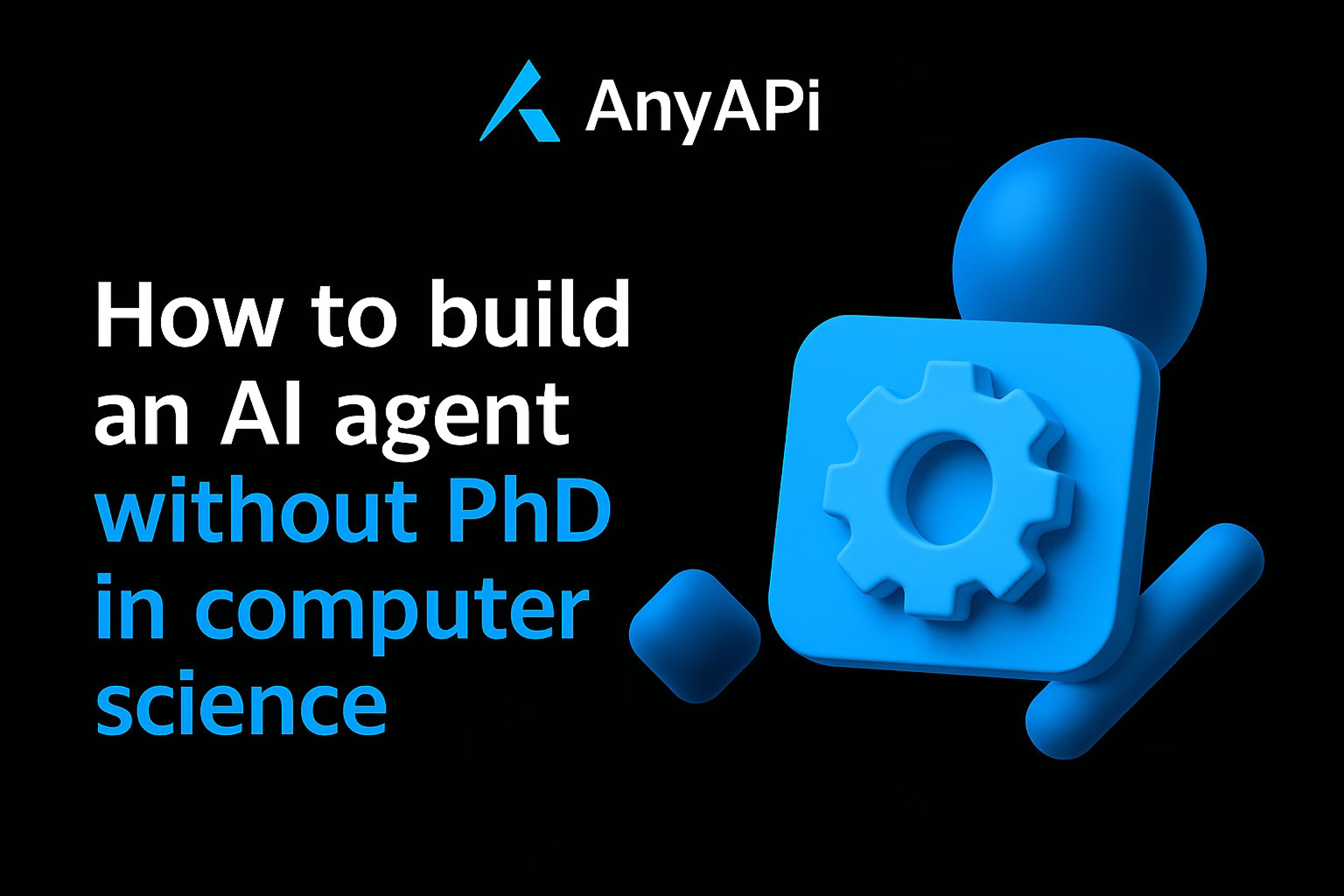How to Build Your First AI Agent

You’ve seen the demos. Agents that book travel, answer support tickets, summarize contracts, or auto-email leads. But here’s the challenge: building AI agents used to mean stitching together vector databases, APIs, prompt chains, and model fine-tuning—fast-tracking you into devops chaos.
What if you could build a working AI app without writing code?
The rise of no-code AI platforms means the barrier to entry is lower than ever. You don’t need to understand transformers or LangChain to launch something useful. You just need to understand how agents work and where to apply them.
Let’s walk through how technical teams and SaaS builders can leverage no-code tools to go from idea to product – fast.
What Is a No-Code AI Agent?
An AI agent is a system that can reason, act, and adapt toward a goal – autonomously. Unlike simple chatbots, agents combine multiple tools, memory, and sometimes multi-step reasoning to accomplish tasks like:
- Booking appointments
- Researching and synthesizing answers
- Generating personalized outreach
- Managing workflows
In no-code platforms, you don’t write logic – you compose agents visually using tools, prompts, actions, and memory blocks. It’s like Zapier, but with an LLM in the loop.
How No-Code AI Tools Work
Most no-code agent builders share a few core components:
- Prompt builders: define what your agent does, in plain English
- Tool integrations: prebuilt APIs like Google Search, Zapier, Slack, or your own endpoints
- Memory or state management: to carry context across steps
- Decision logic: often in the form of flowcharts, if/else blocks, or goal trees
- Model abstraction: choose GPT-4, Claude, Mistral, etc., behind the scenes
These tools abstract away model selection, token handling, retries, and function calling – so you can focus on UX and logic instead of infra plumbing.
Popular no-code agent tools include:
- Relevance AI
- Flowise
- Dust
- AgentHub
- Adept’s ACT-like interfaces (coming soon)
Building Your First Agent Step-by-Step
Let’s say you want to build a “lead qualifier” agent that asks users questions and decides whether to pass them to sales.
Here’s how it might come together in a no-code platform:
- Define the goal:
→ “Qualify B2B leads and summarize the result to a sales rep.” - Input step:
→ Embed a simple web widget or connect to Slack/Intercom for user input. - Prompting logic:
→ “Ask these three questions about budget, team size, and timeline. Be polite and adaptive.” - Tool use:
→ Use an enrichment tool like Clearbit or a webhook to a CRM. - Scoring logic:
→ Use a scoring prompt or rules like “if budget > $10K and timeline < 2 months, mark as qualified.” - Output:
→ Generate a Slack message for a human rep, or log the result to a spreadsheet.
You’ve built a working agent. No Python. No vector store. Just reasoning steps, tools, and smart prompting.
How Developer Teams Are Actually Using This
Let’s ground this in real-world examples.
SaaS Support Automation
A dev team at an early-stage SaaS startup uses a no-code agent to triage support tickets. The agent pulls in user data from Stripe, prioritizes issues, and drafts responses for human review. Time-to-resolution dropped 40%.
Marketing Workflows
A founder uses an agent to rewrite blog content for different channels. The system takes markdown input, turns it into tweets, LinkedIn posts, and SEO briefs—saving the team hours per week.
Internal Tools with LLMs
An operations team builds an internal QA assistant. It reads SOP documents, answers questions, and routes tricky cases to a human. The whole thing runs on a no-code orchestration layer powered by LLMs and Airtable.
No-code doesn’t mean low-function. These agents are doing real work—just without the boilerplate.
Limitations and Tradeoffs
No-code AI agents are fast to build, but not perfect. Some tradeoffs to consider:
- Debugging is harder. Visual editors abstract a lot. You may not see token-level logs.
- Scalability is limited. Great for prototypes and internal tools—less ideal for high-volume production.
- Vendor lock-in. Your logic lives inside their interface unless they support export or APIs.
That said, for 80% of use cases – especially early validation or automation—they’re more than good enough.
The Role of APIs in No-Code Agent Building
Even in no-code platforms, APIs power everything under the hood: tool calls, model invocations, webhooks. If you want to extend or customize your agent beyond the drag-and-drop UI, you’ll likely need to:
- Add external data sources via REST endpoints
- Connect to internal APIs or LLM endpoints
- Log user behavior or analytics
- Fine-tune prompts with structured inputs/outputs
This is where tools like AnyAPI come in – giving teams a consistent, production-ready interface to multiple model providers without having to manage auth, logging, or SDKs.
Why No-Code Isn’t Just for Non-Devs
You don’t need to ditch code forever. But the ability to validate, ship, and iterate without touching a backend is a game-changer—especially for founders, ops teams, and product managers.
Think of no-code agents as the UI layer for AI. And as you grow, you’ll want flexible infrastructure underneath.
That’s where AnyAPI fits in.
When you're ready to scale agents across models, handle observability, or route requests based on performance or price – AnyAPI gives you the control layer to go from prototype to product.





